A new report from Monash University’s Climateworks Centre shows that unless Australia sees a “rapid” ZEV (zero emission vehicle) uptake of 72 per cent of all new vehicle sales by 2030, including light vehicles and trucks, the transport sector will fail to contribute its share of emissions reduction.
But the report also notes that focusing on EV uptake alone will not be sufficient, and that governments will need to think differently and creatively about transport solutions. “Traffic is still traffic,” says Helen Rowe, a lead author of the report.
Rowe says a key part of the solution will be addressing congestion, including a focus on pedestrians and cycle ways and adopting some of the dramatic European moves, including in Paris, to keep heavy vehicles, including SUVs, out of city centres.
The Climateworks report says transport is currently the third largest emitting sector in Australia, but it is also the fastest growing and is forecast to become the bigger emitter by 2030, overtaking electricity and agriculture.
Road transport makes up 86 per cent of all transport emissions, which includes 42 per cent from passenger cars, 23 per cent from trucks, 19 per cent from light commercial vehicles (LCVs), and 2 per cent from buses.
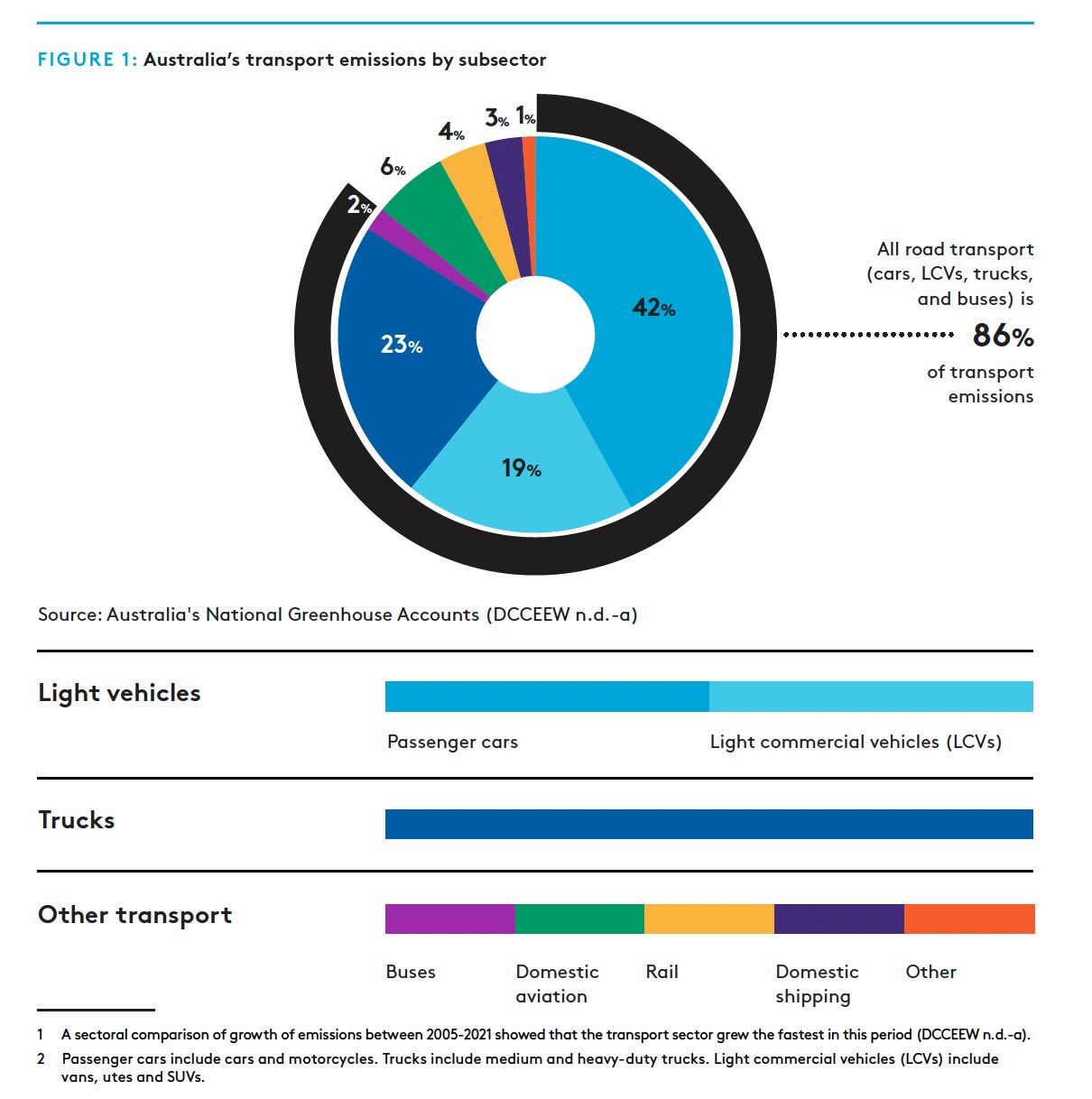
Climateworks says its rapid ZEV uptake scenario, needed for the transport sector to remain 1.5°C aligned, sees zero-emission light vehicles making up 73 per cent of new light vehicle sales by 2030.
This far exceeds the latest federal sales projections for EVs which currently stand at just 27 per cent. Even the “moderated” EV uptake scenario of 56 per cent is well above government projections.
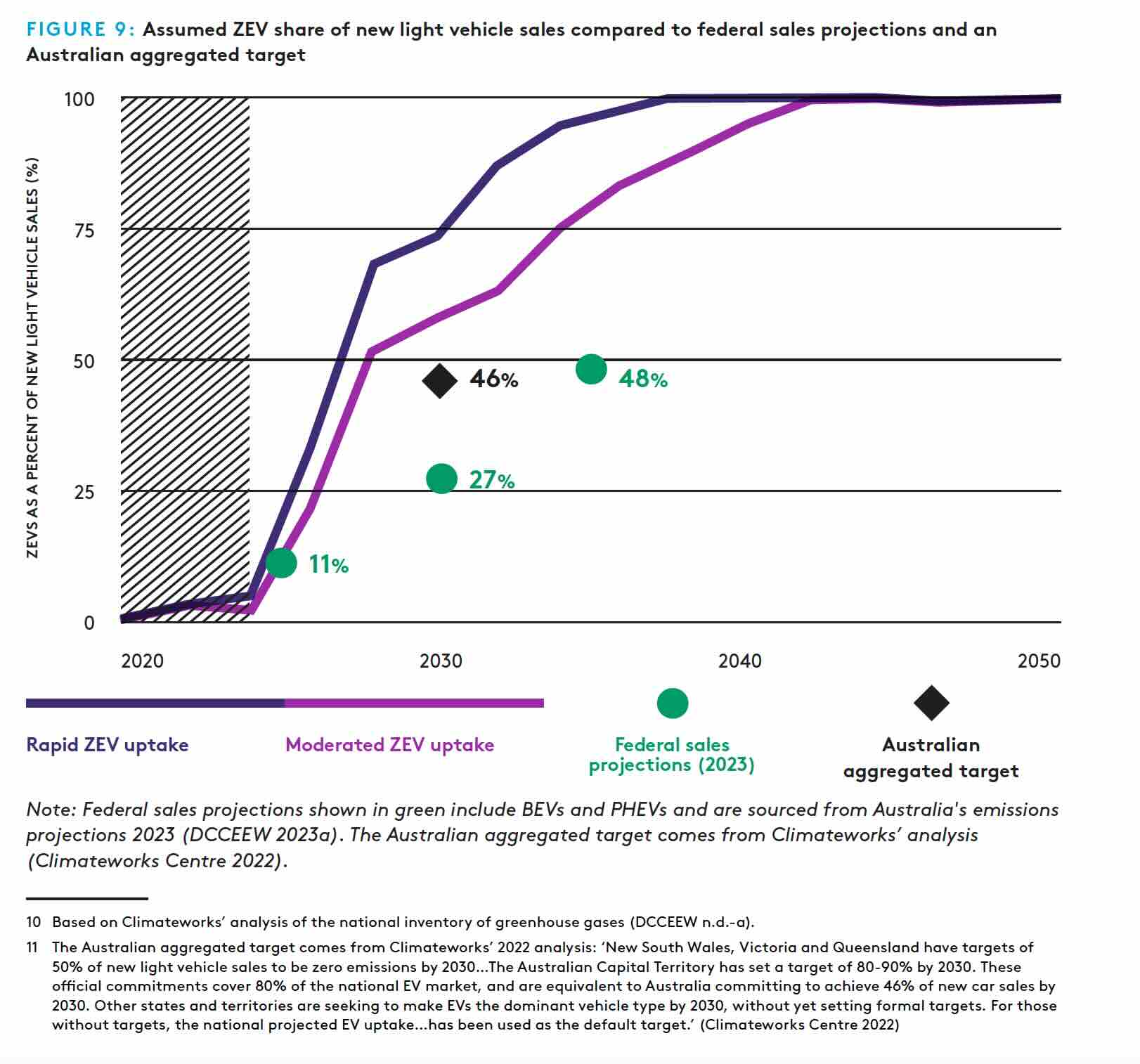
Transport sector needs “diverse solutions” for a credible plan to stay 1.5 degree aligned
Climateworks transport program lead, Helen Rowe says governments need to shift the way they think about approaching transport sector decarbonisation in the face of modest EV uptake.
‘The goal is to reduce transport emissions, move people and goods efficiently and create a sector that is resilient to the challenges ahead – this requires Australia to expand its focus beyond EVs,” says Rowe.
“As transport emissions continue to ramp-up, now is the time to be diversifying solutions, rather than placing our eggs in the one basket. This includes incorporating ‘mode shift’ – shifting the way we move people and goods to more sustainable modes – and reducing some unnecessary trips, for example through making freight deliveries more efficient.
“Just like in the energy sector, where the nation is backing a whole suite of clean energy solutions, Australia can do the same with transport, by ramping up EV uptake while also supporting things like public and active transport, zero-emissions trucks and shifting more freight by rail.
“Investing in and implementing a diverse range of solutions can also increase transport choice, reduce congestion, and make travel more efficient and convenient.
“If the nation purely focuses on replacing every car and truck on the road with a zero-emissions option, it is going to get stuck with the same congestion issues. Traffic is still traffic, no matter the vehicle you are in.”
Avoid, Shift and Improve (ASI) approach to transport sector decarbonisation
The research organisation says that for the first time their modelled decarbonisation scenarios for Australia’s transport sector include more than technology changes (e.g. ‘Improve’ solutions) to explore broader decarbonisation solutions and their impact on emissions. The Avoid, Shift and Improve approach enables much faster decarbonisation and a much more resilient transport sector overall.
“The advantage of the ASI approach comes from the overlay of all three types of interventions. Together, these create a comprehensive suite of solutions that enable greater and more rapid emissions reductions.” says Climateworks.
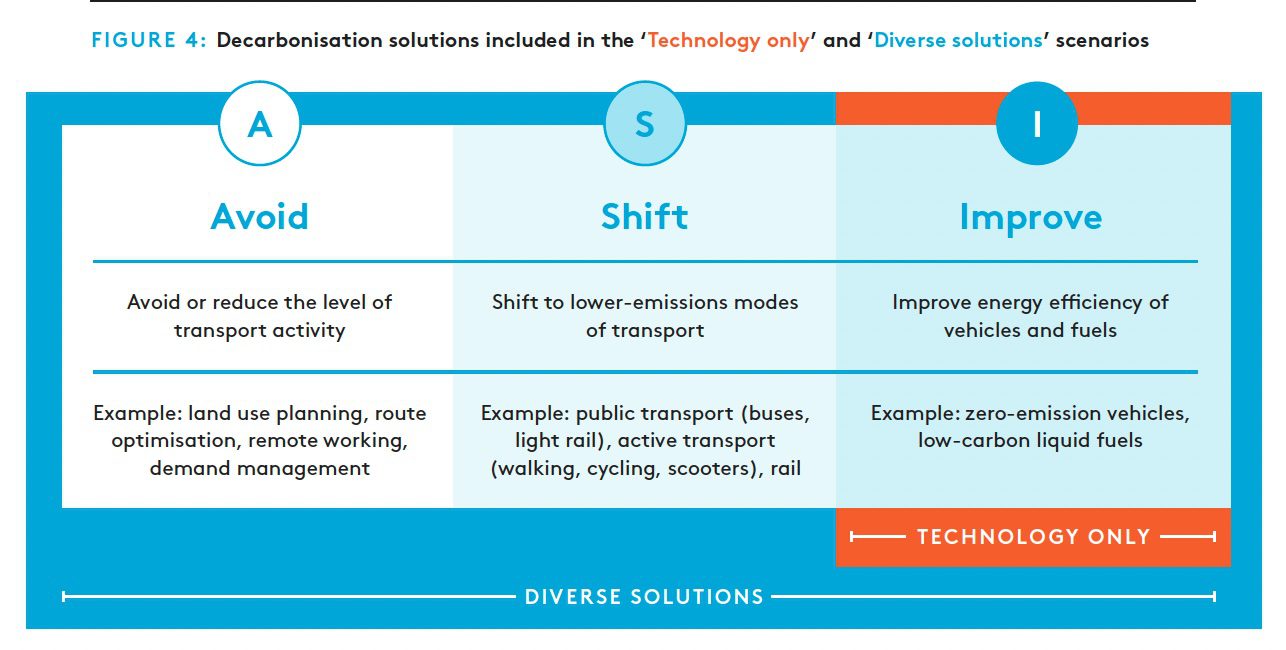
The report provides examples of how the ASI approach to decarbonisation has been successfully implemented in other countries.
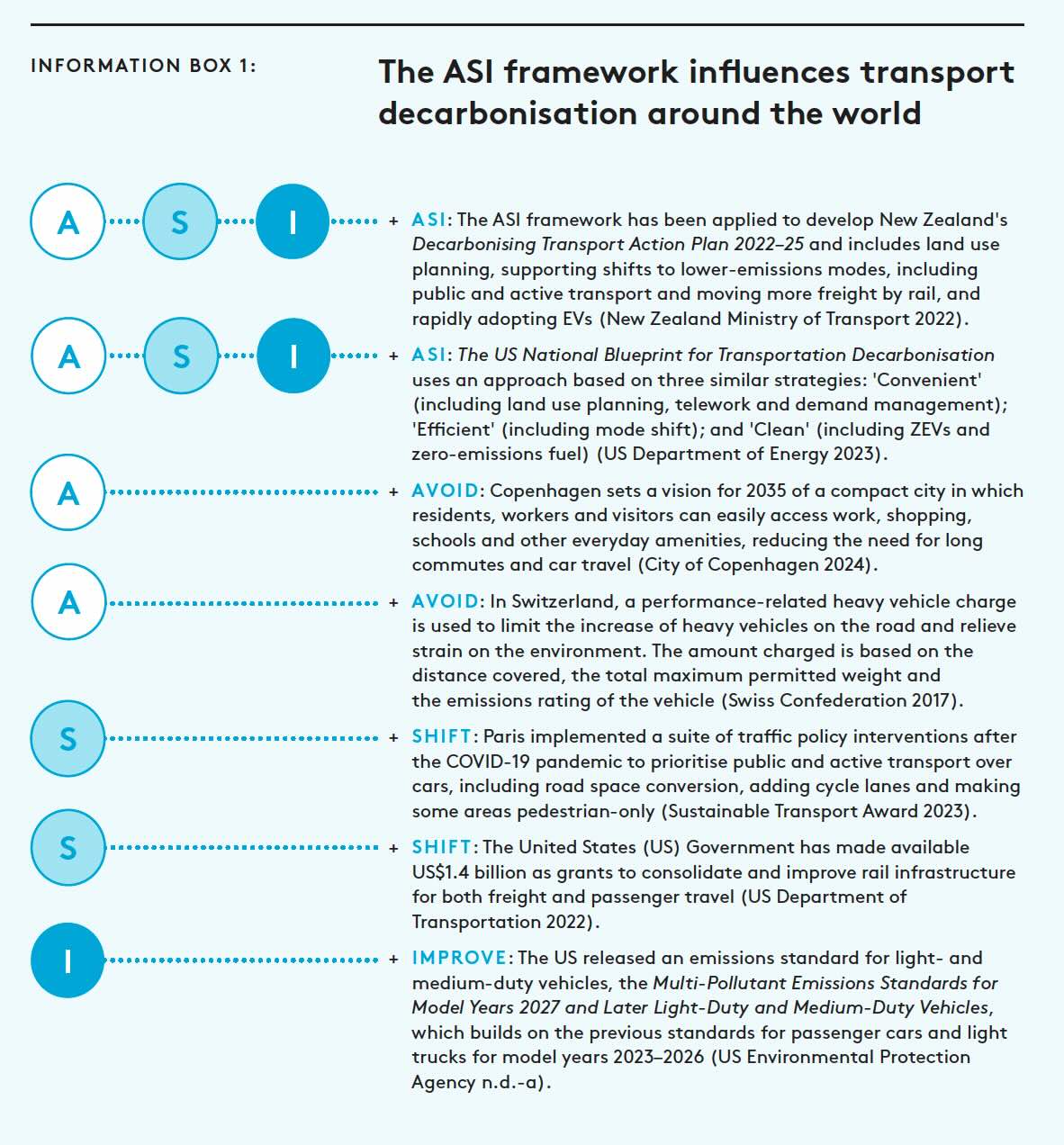
Based on two EV uptake scenarios and two “diverse solution” scenarios, the Climateworks modelling forecasts one of 4 different transport sector pathways resulting in different speeds of decarbonisation.
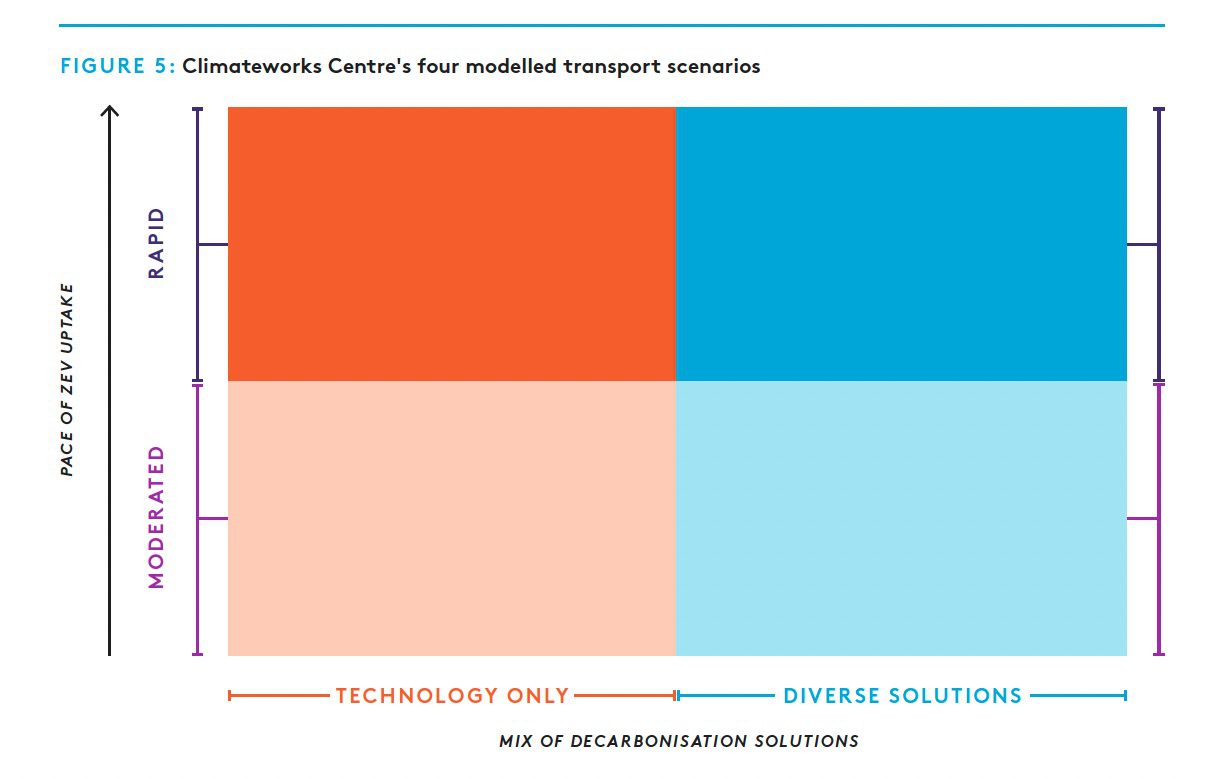
In its diverse solutions scenario, Climateworks makes the assumptions that 10 percent of passenger travel and five per cent of freight will be avoided completely. Additional mode shifts to public and active transport will reduce passenger car use by 35 per cent.
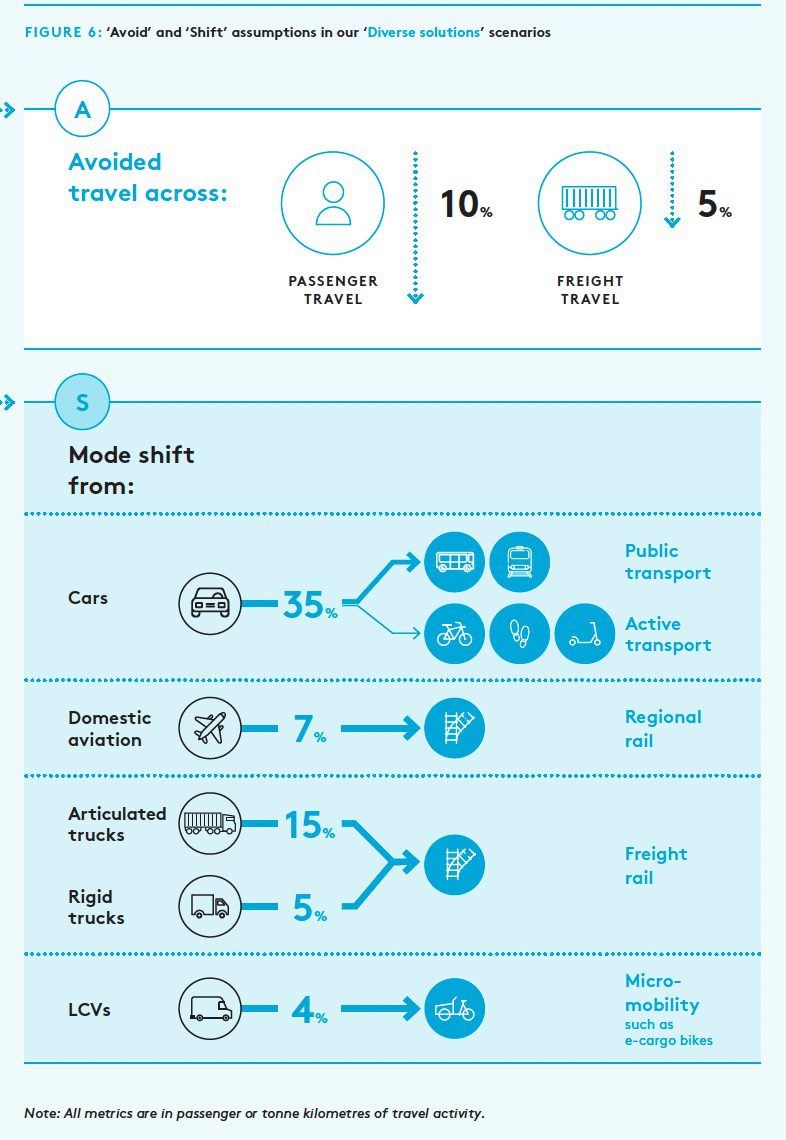
Based on its modelling, Climateworks shows that a “moderated” EV uptake of 56 per cent by 2030 (well above the government’s projection of 27 per cent) will still overshoot transport sector 2050 emissions budget of 1,330 Mt CO2e by a significant margin.
While a “Technology only” approach (shown in orange below) of 73 per cent EV market share by 2030 is 1.5 degree pathway aligned, there is no room for error.
Climateworks says the only credible plan is a rapid ZEV uptake with additional diverse solutions (shown in dark blue below) which cuts emissions fast enough to remain below the emissions benchmark.
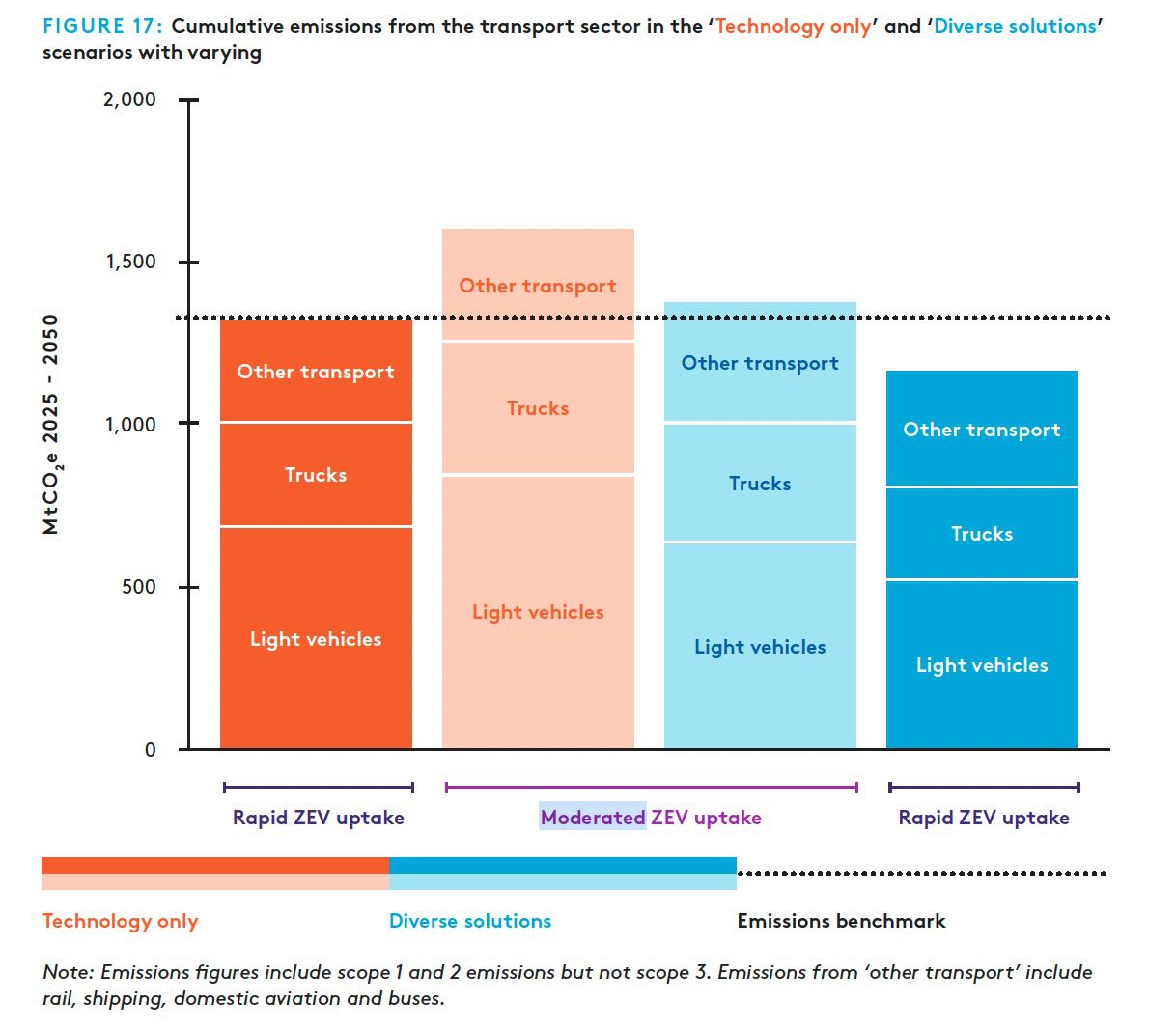
New Vehicle Emissions Standard “not sufficient” to reduce light vehicle emissions
Climateworks says that while the recently legislated New Vehicle Efficiency Standard (NVES) is a good starting point, it doesn’t go far enough to reduce transport sector emissions to remain 1.5 degree aligned.
“Climateworks estimates that as currently designed, the NVES would not sufficiently reduce light vehicle emissions to align with a 1.5ºC trajectory, as seen in the ‘Technology only – rapid ZEV uptake’ benchmark scenario,” says the report.
“It is likely more will be needed to reduce light vehicles emissions in line with even the ‘Technology only – moderated ZEV uptake’ scenario.
“It will be crucial that Australia takes every opportunity to ratchet up the NVES over time through regular reviews. Climateworks recommends the NVES be considered as setting the floor in terms of ZEV uptake, with other policies working in concert with the standard to boost uptake.”
Realistic assumptions for trucks
While the analysis includes both light vehicles and trucks in its ZEV uptake scenarios, Climateworks points out that technology lag will likely result in trucks taking longer to reach high uptake rates compared to light vehicles.
“Accelerating the pace of ZE truck uptake is more challenging than light vehicles with various real-world hurdles, including axle mass restrictions on ZE rigid trucks and uncertainty around the speed at which ZE articulated truck technology will scale,” it says. “These and other challenges make the technology transition timing more uncertain.”
To factor this in, Climateworks also produced an additional scenario whereby zero-emission truck uptake lags that of passenger vehicles by five years.
This analysis isolated ZE trucks, and delays ‘rapid’ uptake of both rigid and articulated ZE trucks by five years, beginning in 2032 instead of 2027. It says this additional analysis is not intended to propose a delay of ZE trucks to 2032. Instead, it provides a simple way to simulate the impact of a slower overall ZE truck uptake.
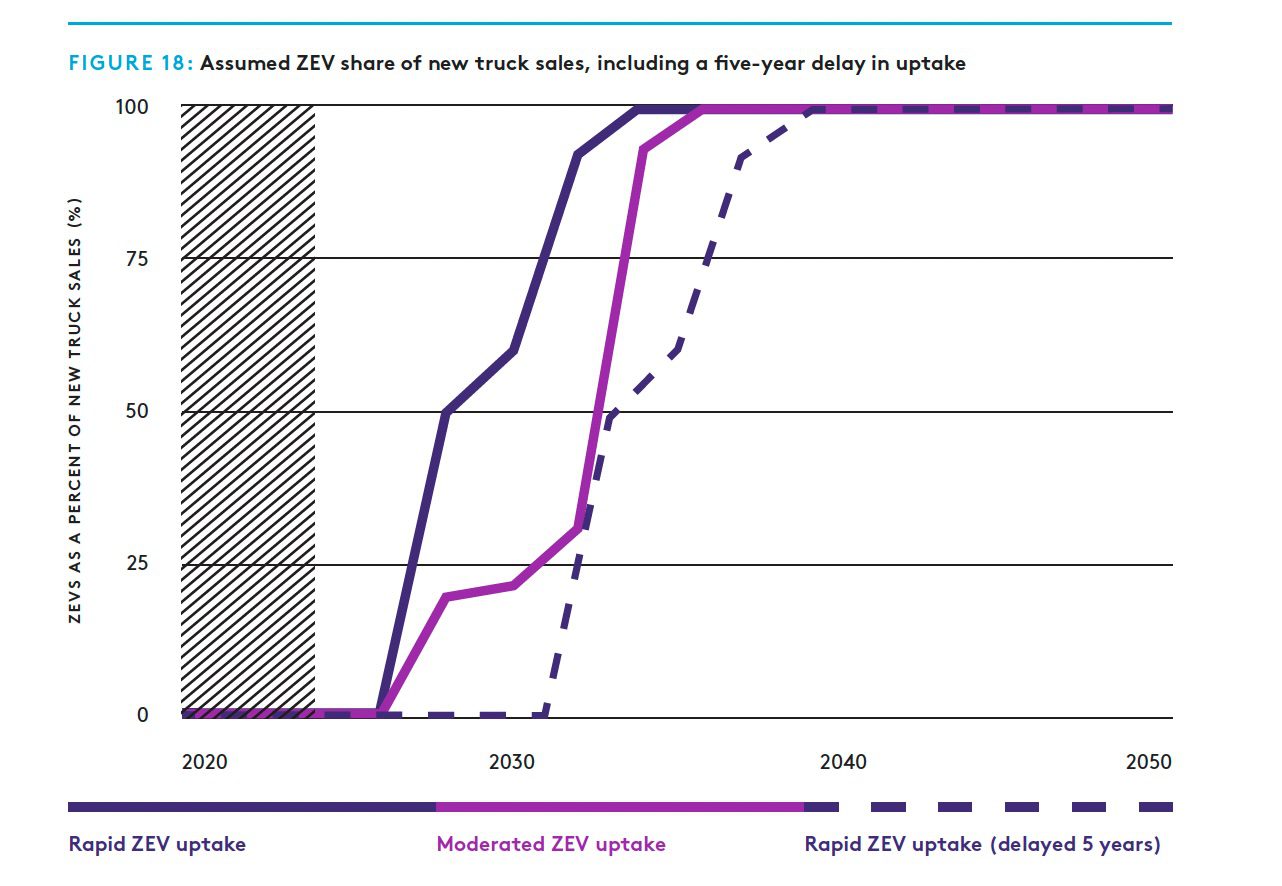
When including the more realistic five-year delay of uptake of zero-emissions trucks, Climateworks shows just how critical the inclusion of strong diverse solutions are for the transport sector decarbonisation path.
Shown in white below, with a five-year delay on trucks, the transport sector marginally overshoots the budget despite the rapid ZEV uptake of passenger cars and strong diverse solution scenario.
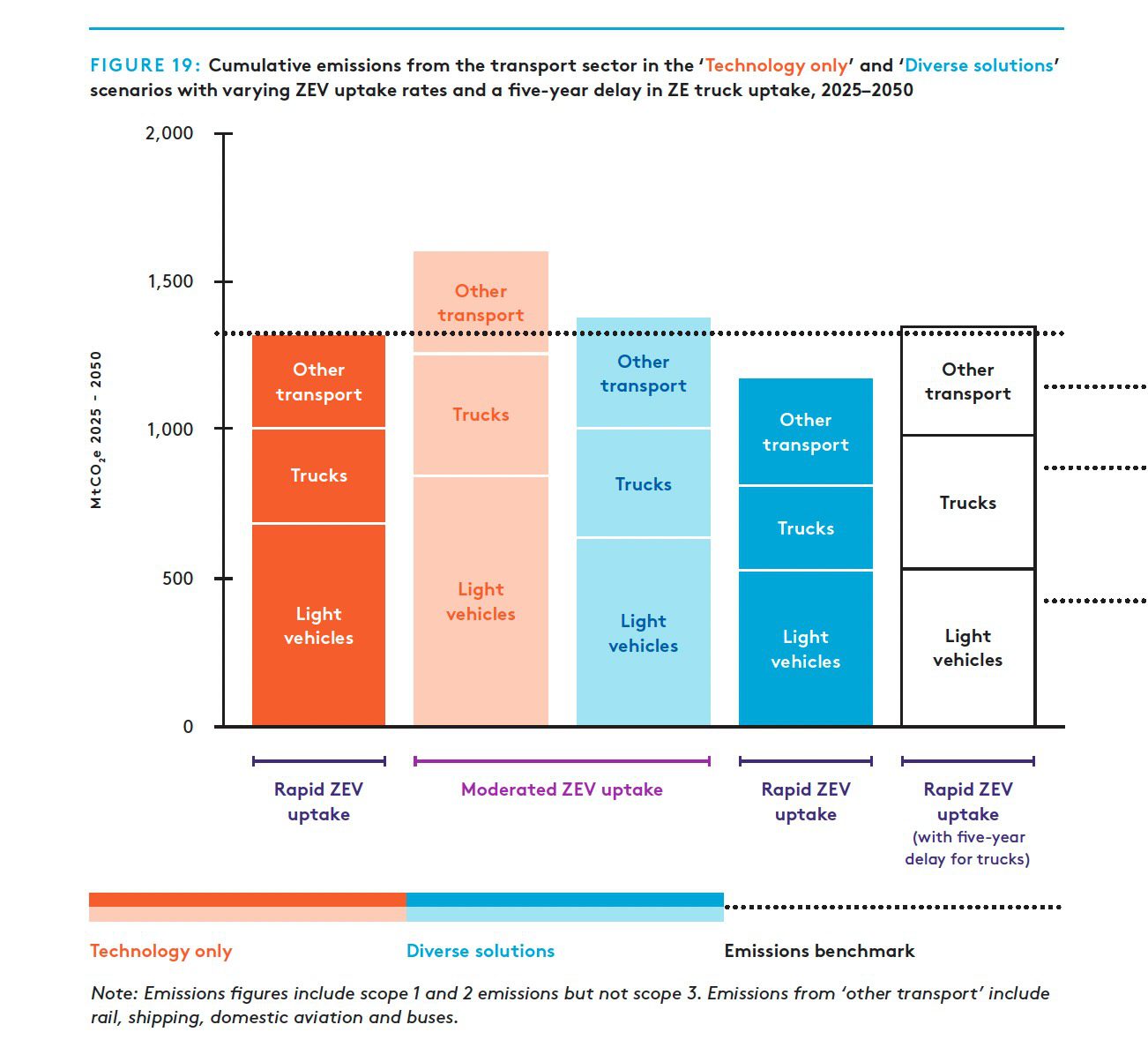
Recommendations: Diversify and take every opportunity to reduce emissions
Climateworks makes three recommendations for governments based on its findings.
- Implement a portfolio of solutions so there is no single point of failure
Rather than relying on technology change alone, Australia should make multiple interventions including mode shift to public and active transport as well as moving more freight by rail and reducing travel activity through shorter, more efficient journeys. - Take every opportunity to increase ZEV uptake from current levels
Ratcheting up zero-emission light vehicle uptake beyond what is likely to be achived under the current NVES will be critical. Removing barriers to the uptake of zero-emission rigid trucks can kickstart reducing truck emissions. It is important to speed up the transition as much as possible to keep the 1.5°C emissions benchmark in reach. - Consider additional benefits beyond emissions reduction when assessing different approaches to decarbonise transport
Beyond reducing emissions, a ‘Diverse solutions‘ approach moves people and goods more efficiently compared to relying on ZEVs alone. It also provides greater transport choice. This approach generates improved transport outcomes such as reducing congestion in busy urban areas where most transport activity occurs as well as reducing the need to build additional infrastructure by using existing transport networks more effectively. Diverse solutions can also reduce pressure on energy systems by reducing the transport sectors’ electricity demand.
With the transport sector forecast to become Australia’s largest source of emissions by 2030 and a recent report from the Guardian showing that most IPCC scientists expect the global warming to “blast past the 1.5°C target”, policy makers need to be laser focused on transport.
All levels of government including local, state and federal, have a responsibility to utilise the Avoid, Shift and Improve approach to decarbonising the transport sector as fast as possible.
From encouraging active transport by making our communities bike and pedestrian friendly, electrifying and expanding public transport such as buses, trams, trains and ferries as well as bending the curve on electric car and truck uptake on a continual basis, decision makers at all levels of government have a duty to ensure everything possible is being done.
Failure to do so risks significantly overshooting emissions targets and locks in catastrophic global heating.
If governments take this challenge seriously, not only can we mitigate the worst future impacts of climate change, we can build a much more efficient and resilient transport sector. Something that will benefit everyone.

Daniel Bleakley is a clean technology researcher and advocate with a background in engineering and business. He has a strong interest in electric vehicles, renewable energy, manufacturing and public policy.

